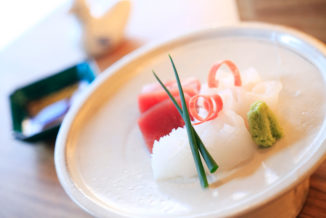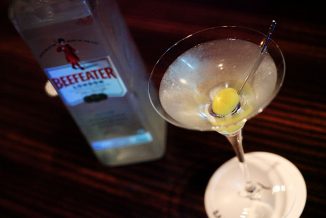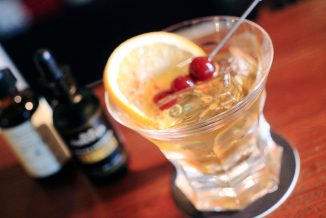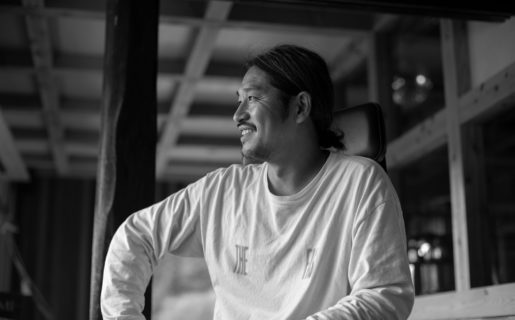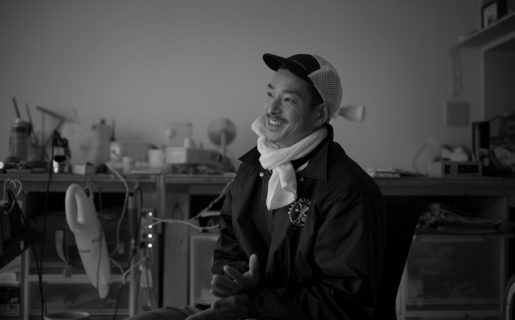PADDLER’S EYE 湘南の今を独自取材した特集と連載
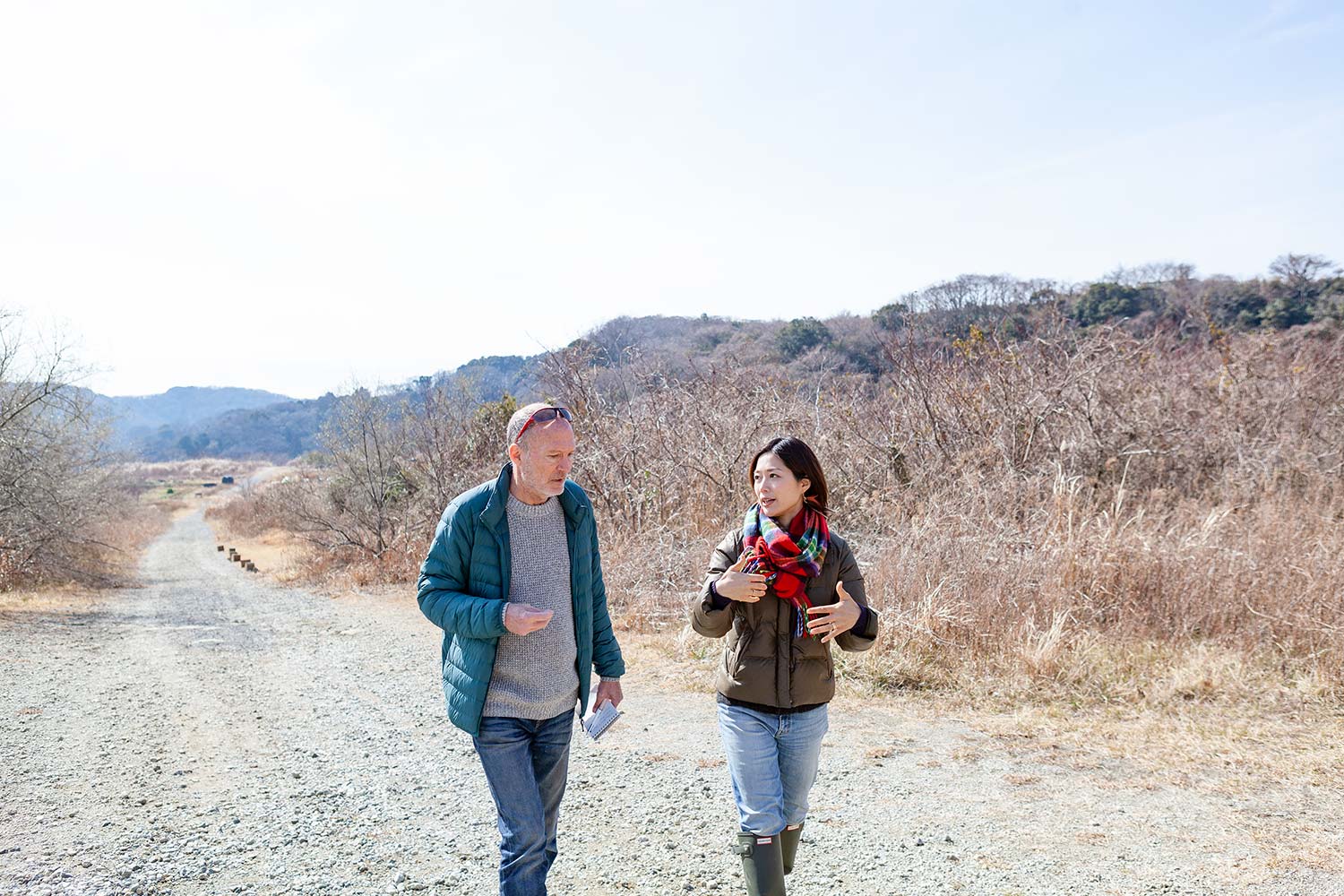
SHONAN CODE
No.3
“ 醜い” 食材が魅せるおいしい世界
The beautiful world of “ugly” food
小雪がちらつく2月の朝、甲斐昂成(こうせい)さんはクーラーボックスを抱え、江の島の「片瀬漁港直売所」にやってきた。彼は漁師たちが水揚した鮮魚を並べるトロ箱や容器を覗き込む。想定内のラインアップにまったく満足した様子を見せない。すると、「湘南の魚はこの人に教えてもらった」と彼が言う料理人の秋山純さんが、魚をさばく手を止めて甲斐さんを手招きした。その足元のプラ箱には、混獲で水揚げされた濃い緑色の甲羅をもつ石蟹が5〜6杯入っていた。どれも小ぶりで正直言っておいしそうには見えない。しかし、甲斐さんの目は嬉しそうに輝いた。「取っておいた。持って行きなよ」と秋山さん。甲斐さんは早速、石蟹にスパイクを打ち込む。「神経締め」と呼ばれる、いわば魚を脳死状態にして鮮度を保持するスキルだ。「殻は固いけど身は結構うまいんですよ。みそ汁かな……」。黙々と手を動かしながら、甲斐さんが呟いた。↙︎

数日後のある晴れた午後。漁港から海岸線を東に20km走らせた場所、「湘南国際村」の人里離れた渓谷にある小さな無農薬・無化学肥料栽培の農園で、西村千恵さんはグリーンマスタード(からし菜)を収穫していた。それらの色合いは豊かで、味覚は刺激的。しかし、一般市場では無農薬や無化学肥料栽培による野菜の場合、大きさや形の不揃いが目立つため、どうしても “B級品野菜”として分類されてしまうものが出やすい。彼女は抱えたバスケットを、そんな野菜でいっぱいに満たしてゆく。すべてが安心して食べられるよう注意を払われながら育てられたものだ。そして、それらはあっという間に調理され、小さなガラス瓶に詰められていく。西村さんが主宰する「FARM CANNING(ファーム・キャニング)」というブランド名を持って販売されるのだ。↙︎
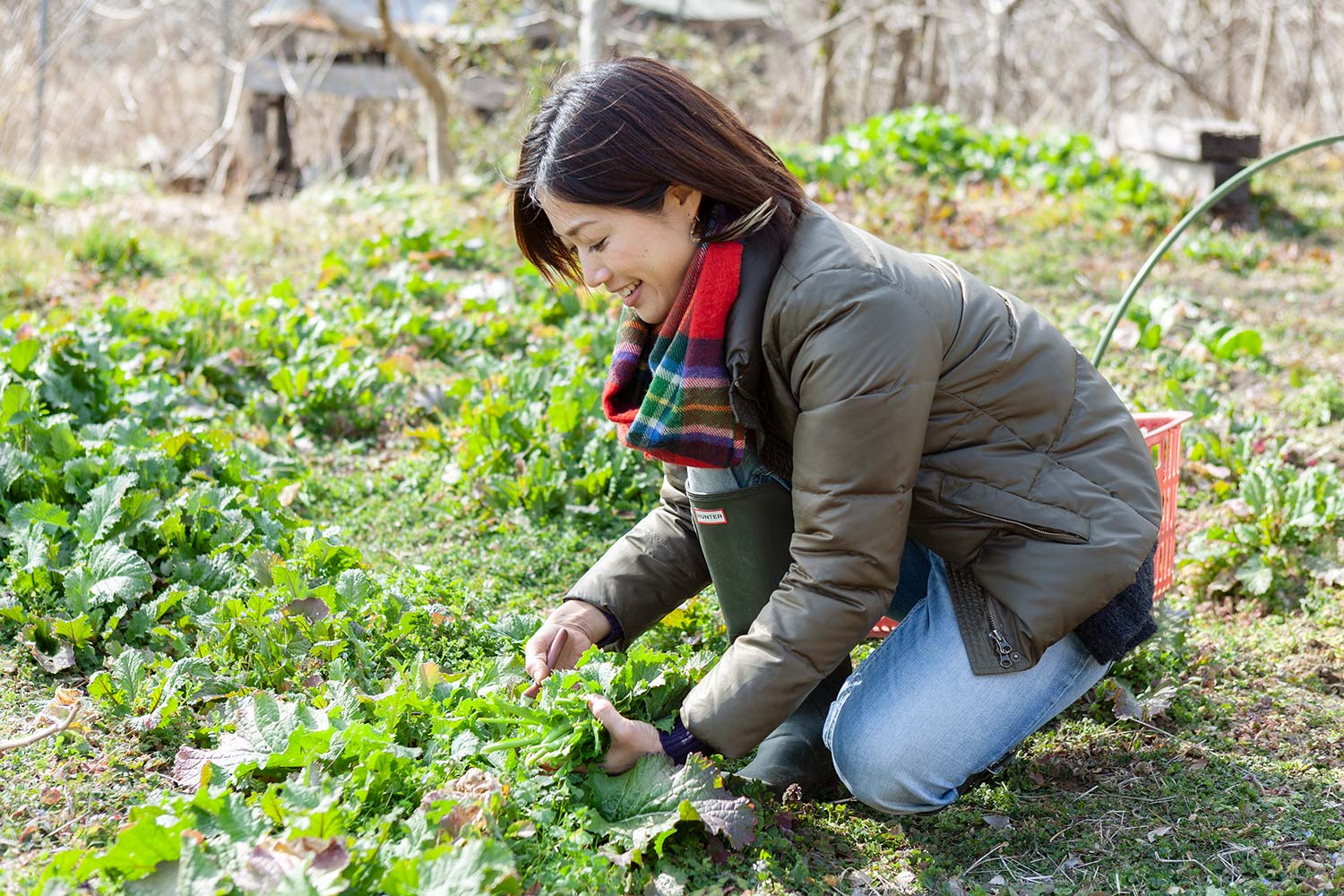
甲斐さんも西村さんも、食用としてパーフェクトであるにも関わらず大抵の場合廃棄されてしまう食品を活用するという、まさに今成長過程にある世界的ムーブメントの一部を担っている人物だ。毎年、推定2兆9000億ポンドの食糧(世界の食糧生産量の約3分の1)が、消費されることなく廃棄されている。
その大部分が、市場や飲食店、家庭での消費の過程で無駄にされた「食品ロス」であり、そしてもう一つ大きな割合を占めるのが、収穫されても流通にさえ乗らずに処分されるもの——農地と海の両領域においてだ。例えば、2012年、東京の築地旧魚市場では、2万トン(東京タワー2棟半の重量)の食用としてまったく問題のない魚が流通されることなく処分されている。
世界中の団体がそんな現象を食い止めようとしている。ヨーロッパにおけるサステナブル思考の食のプロたちは、幅広い種類の収穫があることを世間に知らしめるために “トラッシュ フィッシュ(ゴミ魚)” のディナーイベントを開催している。また、日本を含む多くの国で、定期的に採れたて野菜を入手するための料金を支払うなど、地域支援型農業(CSA)の活動も盛んになってきている。そして、アメリカで今最も流行っている振興事業の一つが、割引価格で“B級品野菜”のデリバリーをするというものだ。
もし、あなたが “B級品野菜”という言葉に嫌悪感を持ち、有機栽培された不格好なニンジンではなく、スーパーで販売されている完璧に形成され、プラスチック入りの野菜の方を好むとしたら、西村千恵さんはあなたの誤解を正してくれるだろう。↙︎
その大部分が、市場や飲食店、家庭での消費の過程で無駄にされた「食品ロス」であり、そしてもう一つ大きな割合を占めるのが、収穫されても流通にさえ乗らずに処分されるもの——農地と海の両領域においてだ。例えば、2012年、東京の築地旧魚市場では、2万トン(東京タワー2棟半の重量)の食用としてまったく問題のない魚が流通されることなく処分されている。
世界中の団体がそんな現象を食い止めようとしている。ヨーロッパにおけるサステナブル思考の食のプロたちは、幅広い種類の収穫があることを世間に知らしめるために “トラッシュ フィッシュ(ゴミ魚)” のディナーイベントを開催している。また、日本を含む多くの国で、定期的に採れたて野菜を入手するための料金を支払うなど、地域支援型農業(CSA)の活動も盛んになってきている。そして、アメリカで今最も流行っている振興事業の一つが、割引価格で“B級品野菜”のデリバリーをするというものだ。
もし、あなたが “B級品野菜”という言葉に嫌悪感を持ち、有機栽培された不格好なニンジンではなく、スーパーで販売されている完璧に形成され、プラスチック入りの野菜の方を好むとしたら、西村千恵さんはあなたの誤解を正してくれるだろう。↙︎
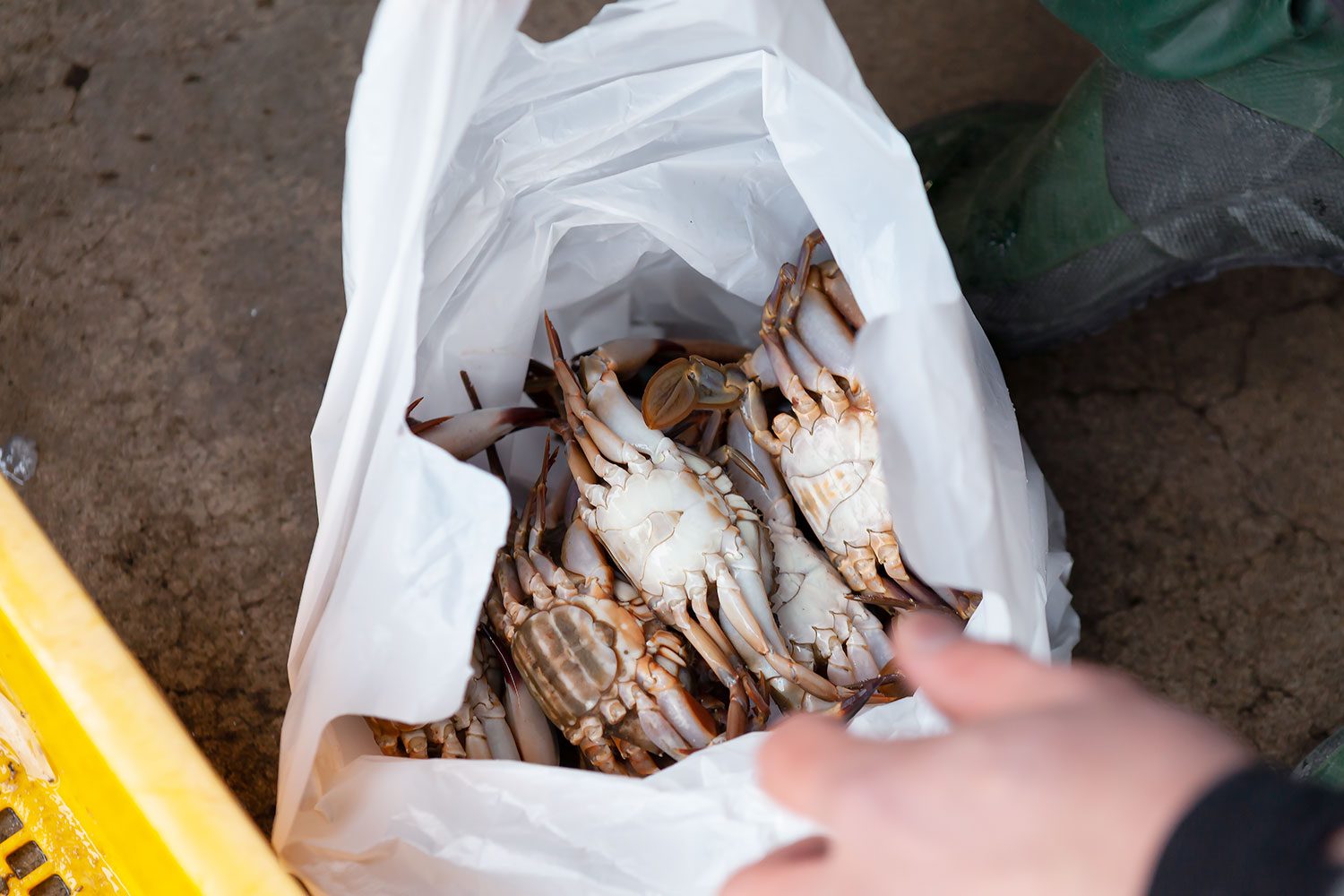

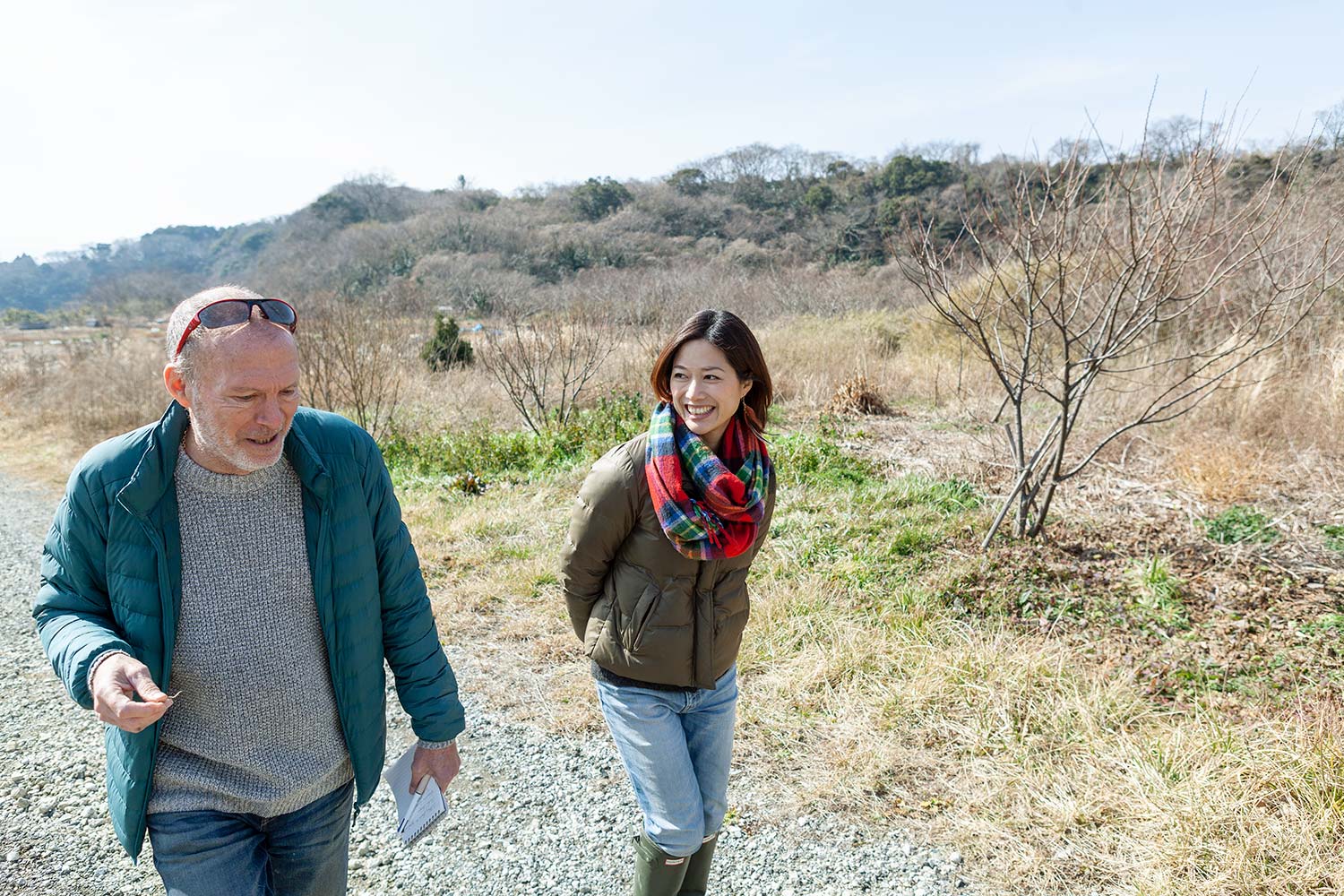
西村千恵さん:「FARM CANNING」代表。「畑を食卓へ」をコンセプトに、畑づくりから収穫野菜を瓶詰めにする年間スクール主宰。生産者向けに6次産業支援や加工品の講座、食品ロスをテーマにしたイベントなども開催
瓶詰めされたSoul & Food
FARM CANNING
西村さんは、かつて東京でオーガニックカフェのマネージャーをしていた頃、クタクタになりながら幼い子どもたちとの時間を持てない働き方に限界を感じていた。そして彼女は、自然環境の中での健康的な暮らしを模索するため、夫と小さな2人の息子とともに湘南に移り住んだのだ。だが、自然の多い移住先にも関わらず、無農薬野菜を入手する困難さにショックを受けていた。「湘南国際村」に隣接した、緑生い茂る渓谷の中に切り拓かれた農場と出会うまでは。
彼女は、かつて人が開発し荒らした土地を、里山として蘇らせるという農園の活動支援に飛び込んでいった。野菜入手と引き換えに1年間のボランティアをしながら、彼女がさらに多くの人を農園に誘致する方法を探し始めると、あるアイディアが思いついた。「FARM CANNING SCHOOL」だ。1年間に及ぶそのプログラムは、千葉や埼玉など他県の参加者をも惹きつけた。
「私は自分自身の夢をモデルに利用したのです」と彼女は語る。「私と同じように感じている人がたくさんいるはずだと思ったんです。自分の口に入る野菜を自分で育て、収穫し、子どもたちとともに自然の中でリラックスしながら、よりオーガニックに暮らしたいという欲求ですね」
このコースは、月に1度のフィールドワークと瓶詰め作りのレッスンを含むのんびりとしたものだ。そこには毎月の野菜の配達も含まれている(今年の新クラスは5月に開始)。そして、西村さんはこの農園で作る瓶詰めを小売販売にも発展させた。現在、「FARM CANNING」ブランドの瓶詰めは、スーパーやカフェ、デリをはじめ、オンラインショップでも購入可能になった。↙︎
彼女は、かつて人が開発し荒らした土地を、里山として蘇らせるという農園の活動支援に飛び込んでいった。野菜入手と引き換えに1年間のボランティアをしながら、彼女がさらに多くの人を農園に誘致する方法を探し始めると、あるアイディアが思いついた。「FARM CANNING SCHOOL」だ。1年間に及ぶそのプログラムは、千葉や埼玉など他県の参加者をも惹きつけた。
「私は自分自身の夢をモデルに利用したのです」と彼女は語る。「私と同じように感じている人がたくさんいるはずだと思ったんです。自分の口に入る野菜を自分で育て、収穫し、子どもたちとともに自然の中でリラックスしながら、よりオーガニックに暮らしたいという欲求ですね」
このコースは、月に1度のフィールドワークと瓶詰め作りのレッスンを含むのんびりとしたものだ。そこには毎月の野菜の配達も含まれている(今年の新クラスは5月に開始)。そして、西村さんはこの農園で作る瓶詰めを小売販売にも発展させた。現在、「FARM CANNING」ブランドの瓶詰めは、スーパーやカフェ、デリをはじめ、オンラインショップでも購入可能になった。↙︎
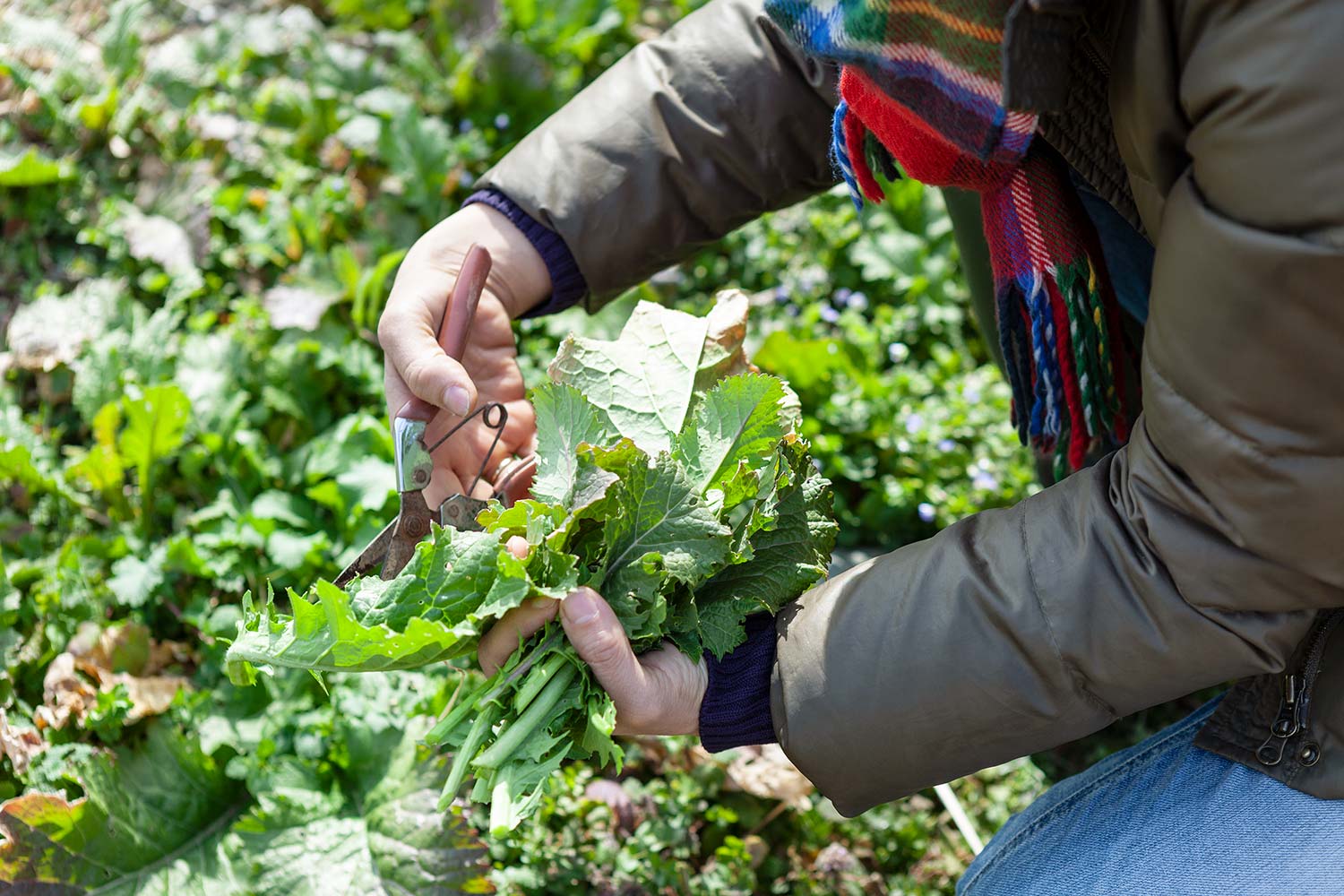
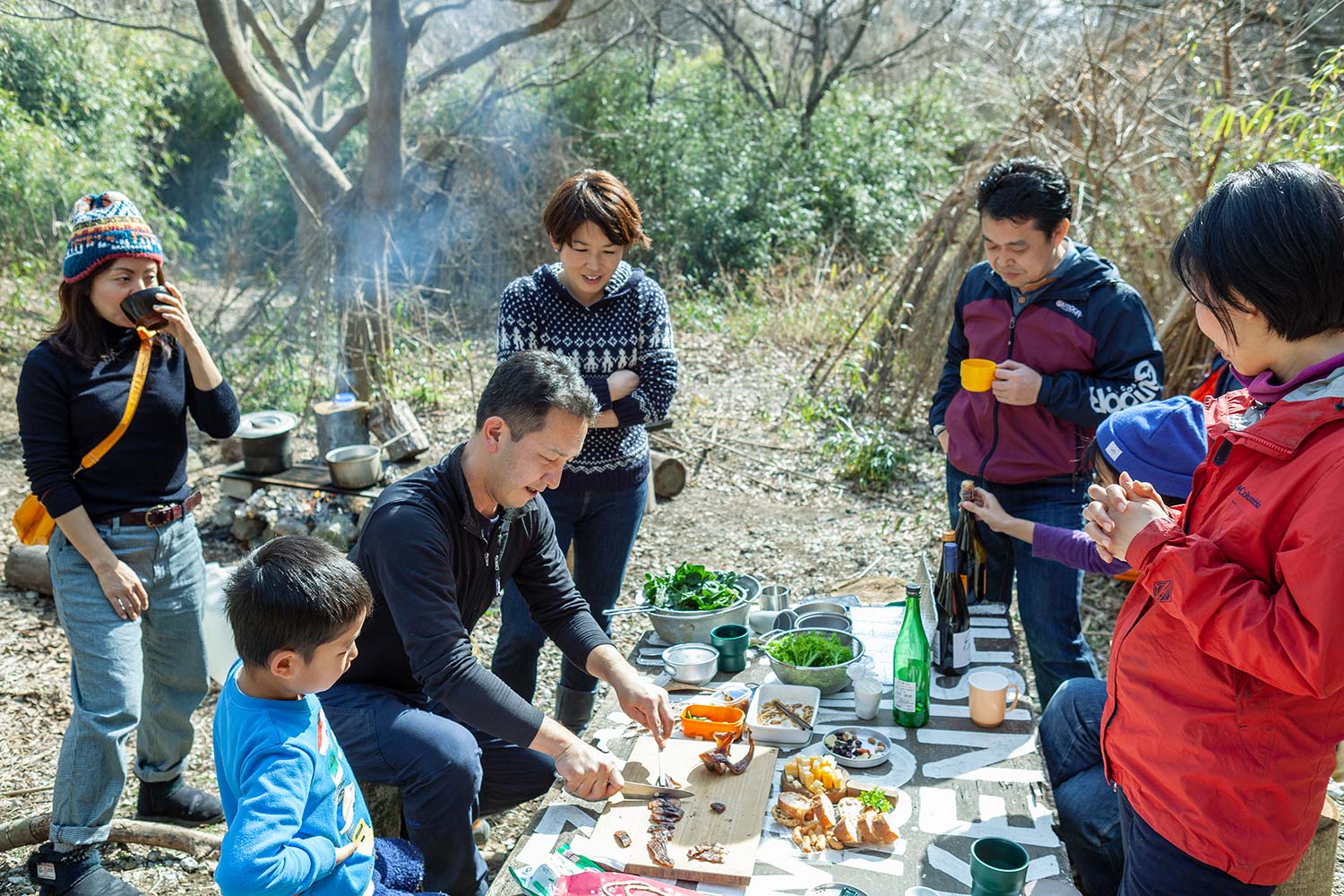
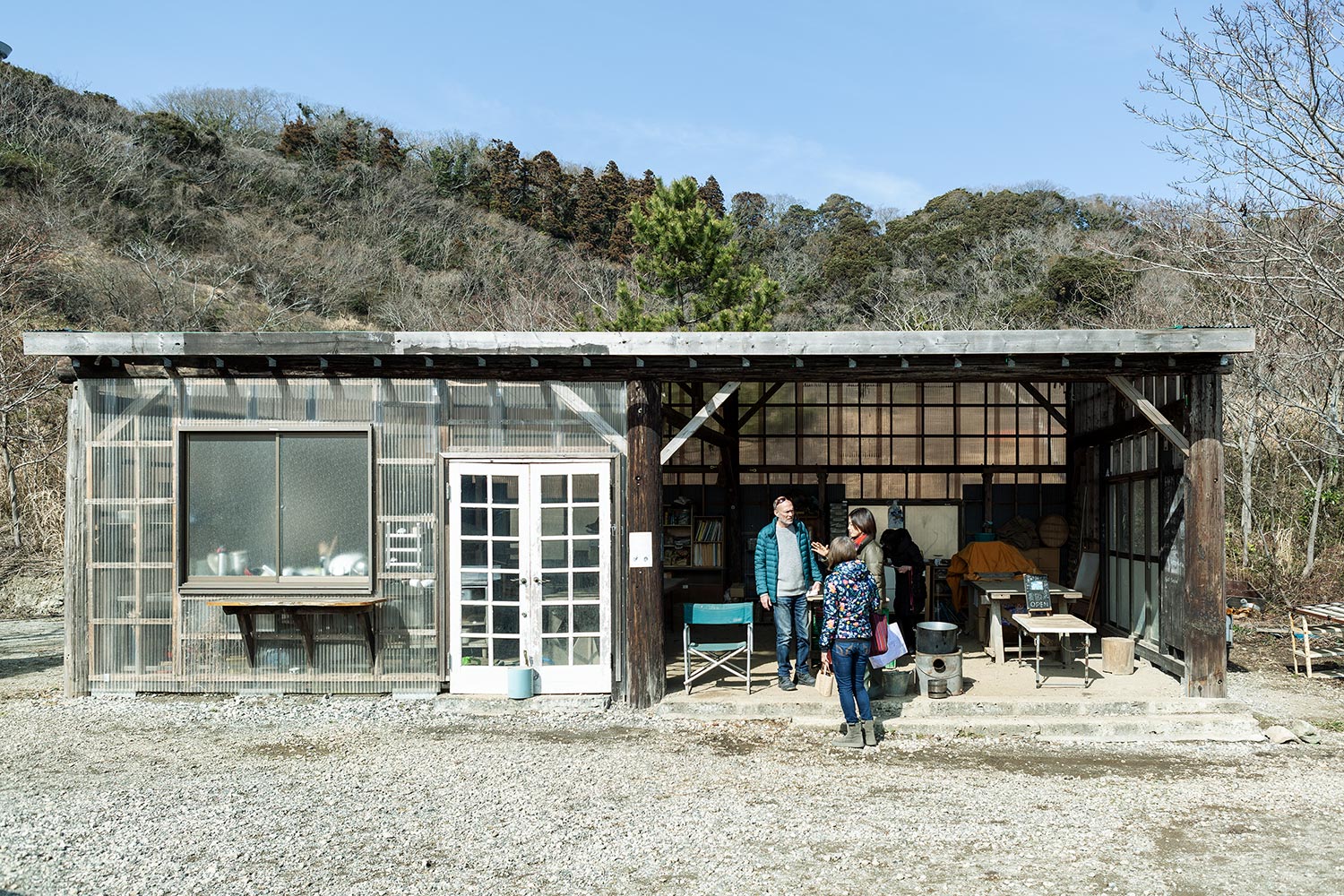
「FARM CANNING」は、市販用瓶詰めに使用する野菜の仕入れ先をほかの地元農家にも求めた。「でも、多くの農家が流通できない“B級品野菜”を抱えていて、もったいないと思いながらも不良品は売りたくないというジレンマを持っていました。私たちはまず、それらを加工することで、新たな価値を生むということを見出してもらいたかった」と西村さんは言う。現在「FARM CANNING」は、多忙な人々が安全で安心な食事をパパッと作れる常備菜的アイテムに焦点を当て、月に300〜400の瓶詰めを手作業で生産している。↙︎
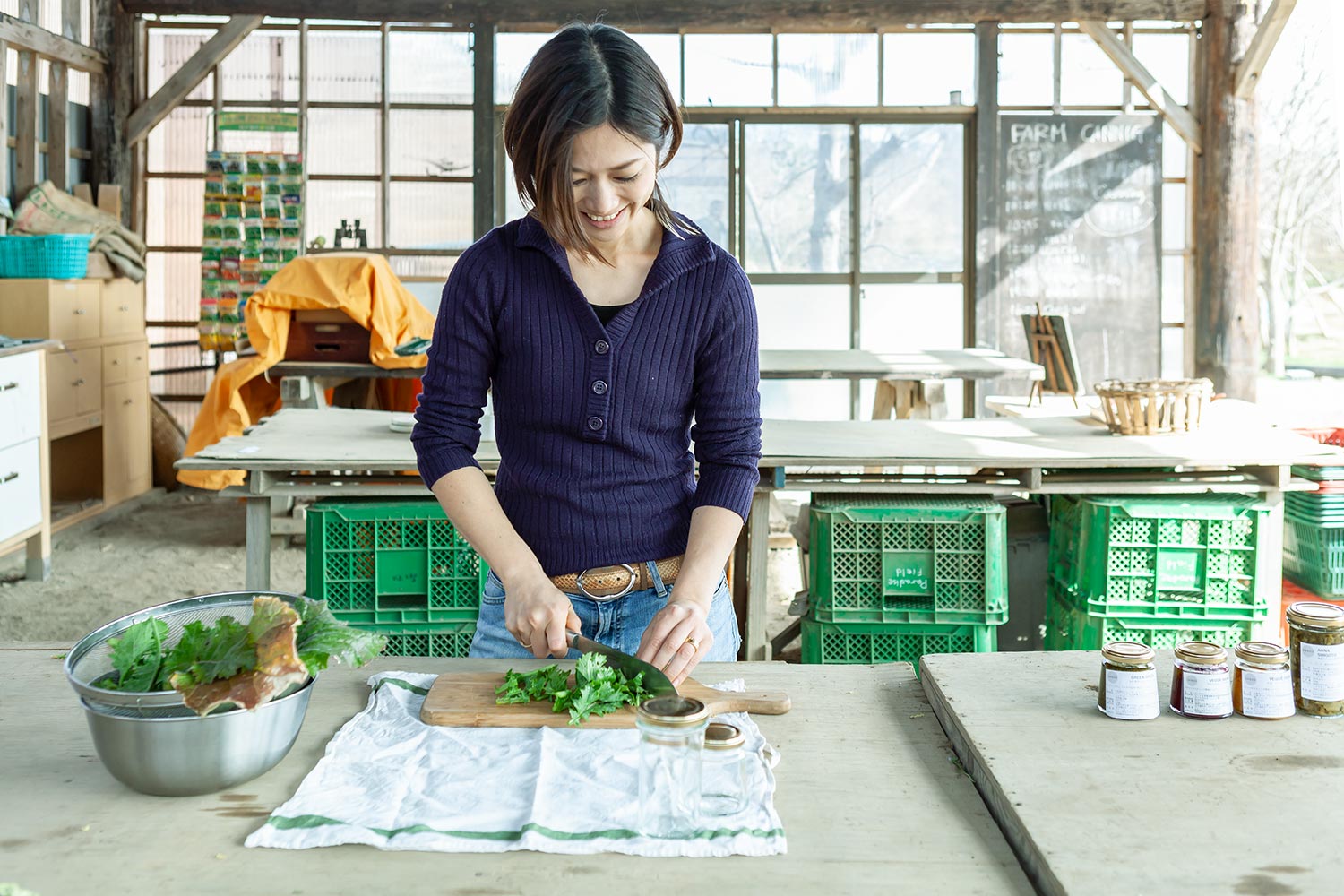
西村さんは、自分自身で収穫をしたものを食べることに勝るものはない、と話す。「フタを開けた瞬間、『これはあの雨降る中で収穫したハーブだ』と、思い出がふわっと香り立つはず。スクールでは畑の空気や過ごした記憶も一緒に瓶詰めして持ち帰ることができます。日常的に自分と食べものとのつながりを感じられることは、豊かなことなのではと思うのです」↙︎
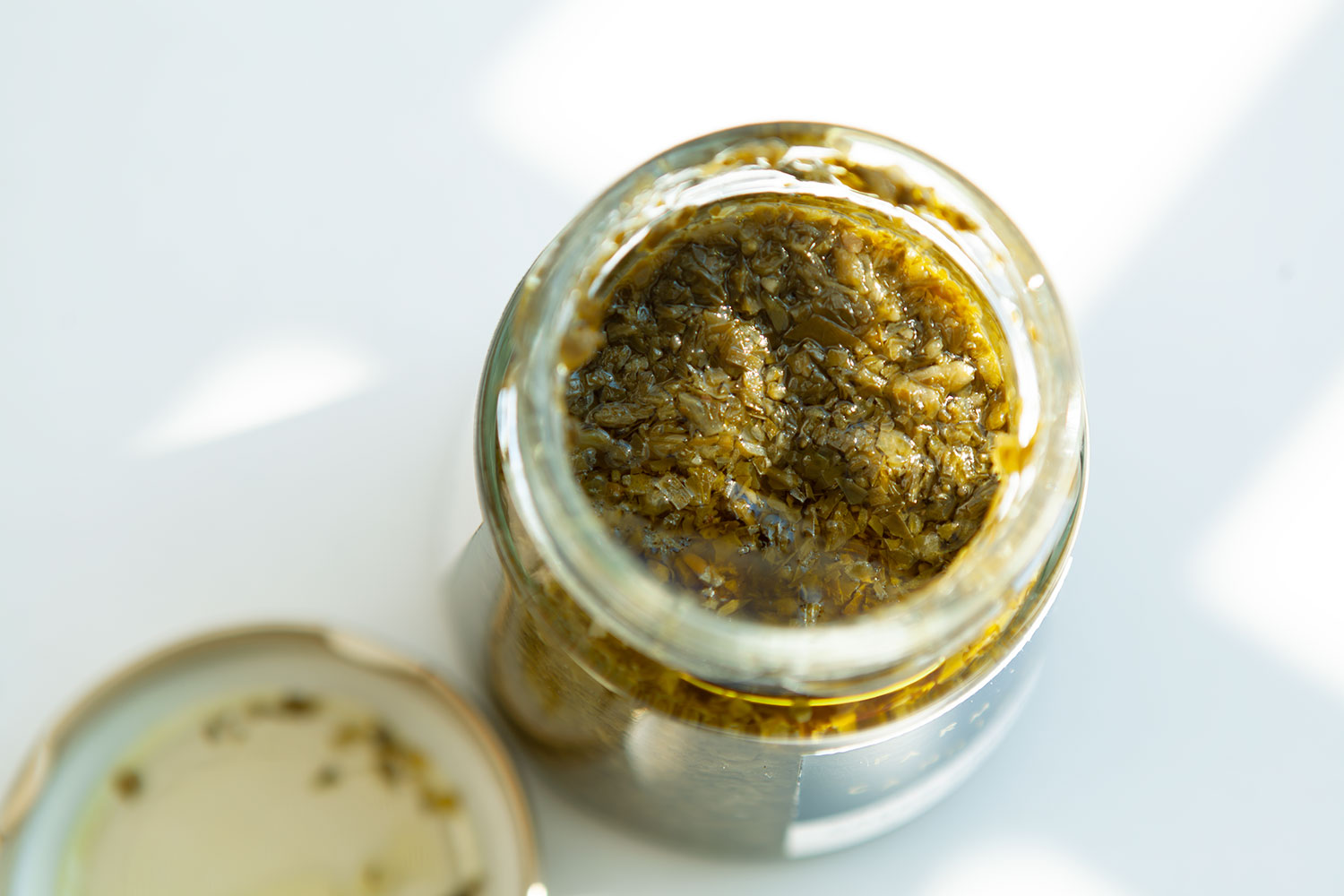
‘’不格好もおいしい。不揃いもおいしい‘’
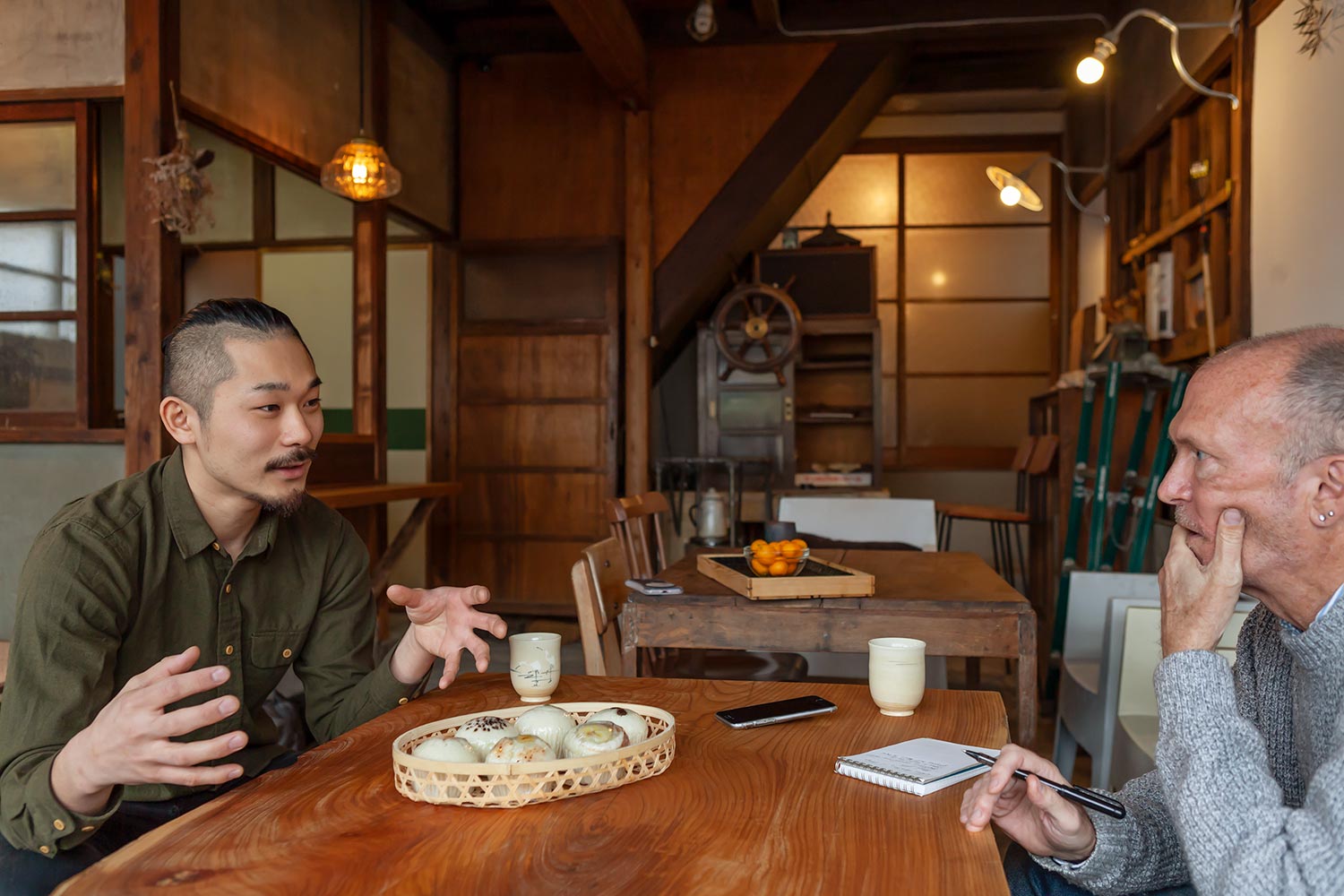
甲斐昂成さん:「Kai’s Kitchen」主宰。お魚コーディネーター/ソムリエ、出張お魚料理人。「bed and breakfast ichi」では三崎の魚を食べ尽くす「昼みさき・夜みさき」を月1度開催
価値のない魚に価値をもたせる
Kai’s Kitchen
熊本出身の甲斐さんは、市場が見向きもしない魚、規格外で流通にのらない魚に価値をもたせるという独特のアプローチをしている。彼は、第一産業の再生から飲食店立ち上げまでを一貫して行う「ap Company」で魚の仕入れを担当。その際に、一般にはほとんど認知されていない、あるいは魚高が少なく市場に出回らない魚たちと出合う機会を得る。以来、彼は稀少な魚、あるいは捨てられていく魚をいかに調理しメニューに昇華させるかの取り組みに魅了されている。価値のない魚にスポットライトを当てる、いわば魚の錬金術師である。
市場にたどり着く前に廃棄される魚——「雑魚」や「醜い魚」といったひどい名で呼ばれる魚は、サイズがまちまちで美しく箱に収まらないか、もしくは、1年のうちに一時期しか食欲をそそらない種だからかもしれない。または、単に一般的に知られていない魚であることも多い。
東京を去り、湘南の魚に惹かれて藤沢市へ。そして二宮町へ昨年、移住してからというもの、甲斐さんは漁港の魚市場に入り浸るようになった。
「僕は“奇妙で珍しい魚を探している料理人”として知られるようになりました(笑)。そして、漁師や地元の料理人から、そんな魚をどう調理するの? と訊ねられるようになったんです。そのうち彼らは、調理法によってはおいしく食べられる、そのほかの不人気な魚についても僕に教えてくれるようになりました」↙︎
市場にたどり着く前に廃棄される魚——「雑魚」や「醜い魚」といったひどい名で呼ばれる魚は、サイズがまちまちで美しく箱に収まらないか、もしくは、1年のうちに一時期しか食欲をそそらない種だからかもしれない。または、単に一般的に知られていない魚であることも多い。
東京を去り、湘南の魚に惹かれて藤沢市へ。そして二宮町へ昨年、移住してからというもの、甲斐さんは漁港の魚市場に入り浸るようになった。
「僕は“奇妙で珍しい魚を探している料理人”として知られるようになりました(笑)。そして、漁師や地元の料理人から、そんな魚をどう調理するの? と訊ねられるようになったんです。そのうち彼らは、調理法によってはおいしく食べられる、そのほかの不人気な魚についても僕に教えてくれるようになりました」↙︎
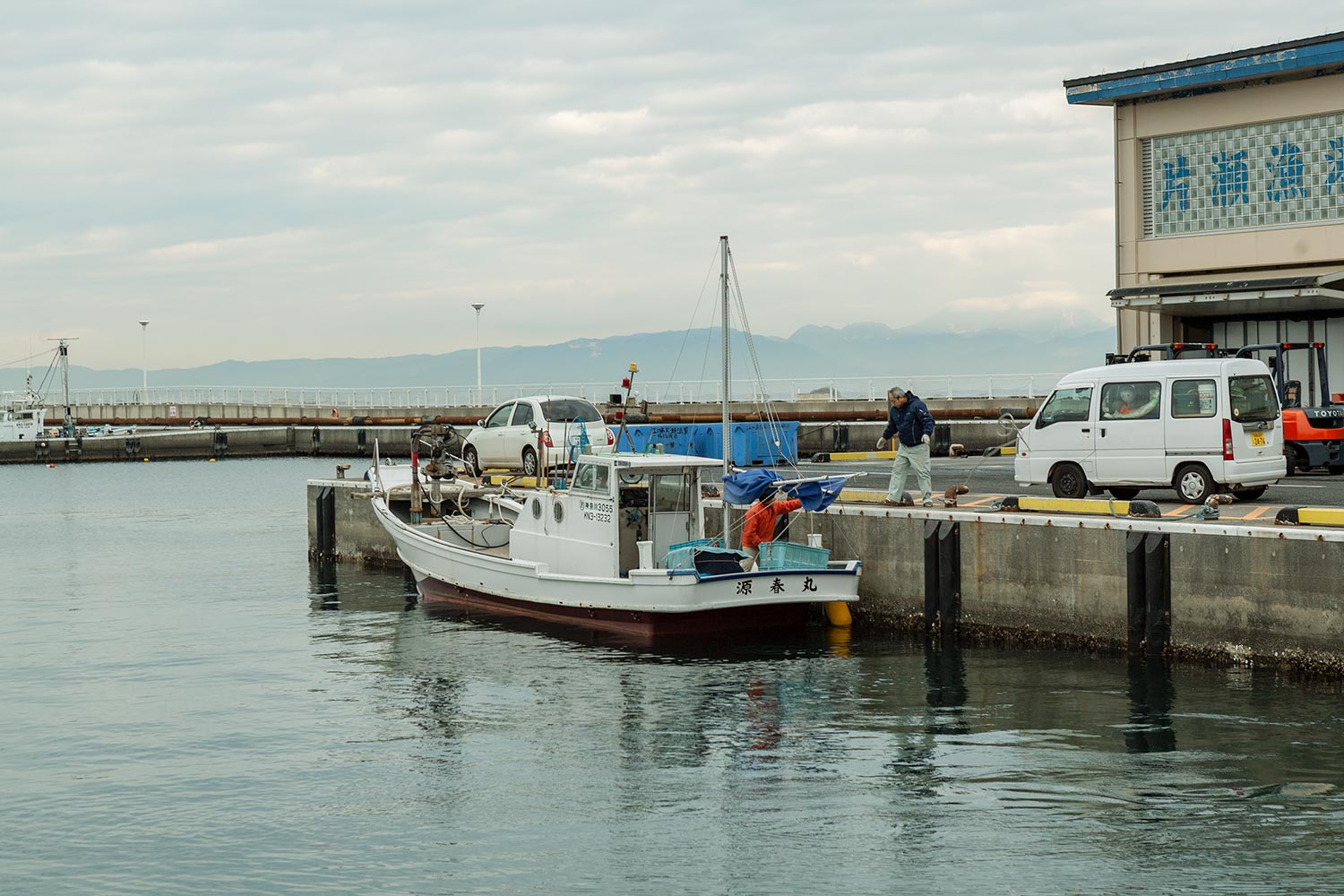

*撮影協力: 江の島片瀬漁業協同組合 湘南藤沢フィルム・コミッション
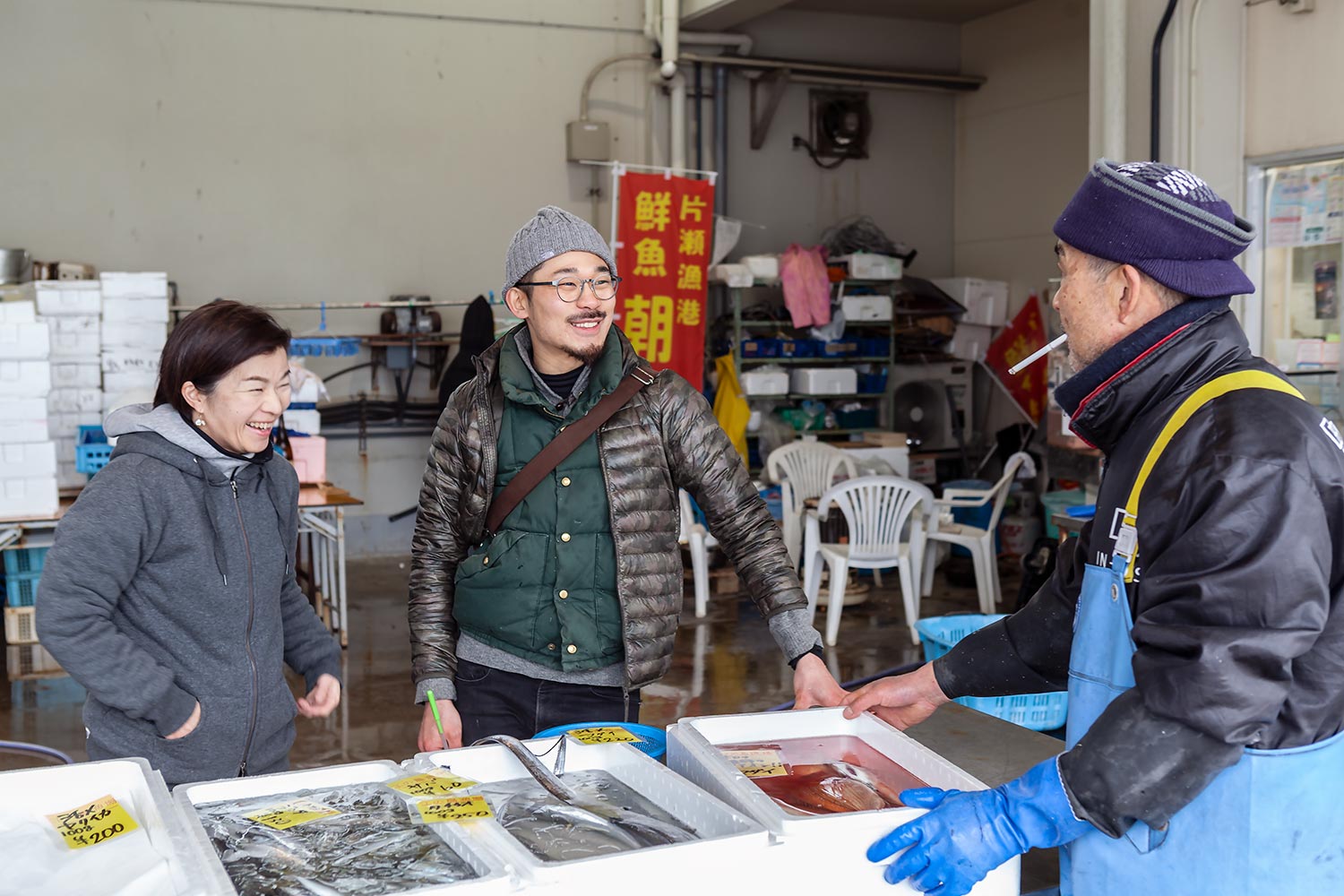
甲斐さんと妻の有加さんは、元・落花生屋の店舗付き古民家で暮らしている。現在、民泊もできる小さなレストラン・カフェにリフォーム中。そんな彼は、企業や個人主催のイベントで実演付きのケータリングをしたり、三浦半島の三崎港近くのB&Bで料理を提供。地元で”無価値”とされる魚をどう調理するかにフォーカスを当てたワークショップや料理教室も人気だ。「最近のイベントで、ボラを料理したんです。ボラにいいイメージはないのですが、僕はそれをシンプルな刺身にしたんです。そうしたらおいしい!と好評でした」。彼は刺身にカマスも提案する。「カマスって脂のノリがすごくいいんです」と。ウツボにおいては「コラーゲンがたっぷりでタタキやフライにすごくいい。そしてエイの肝はまるでフォアグラのようですよ」。↙︎
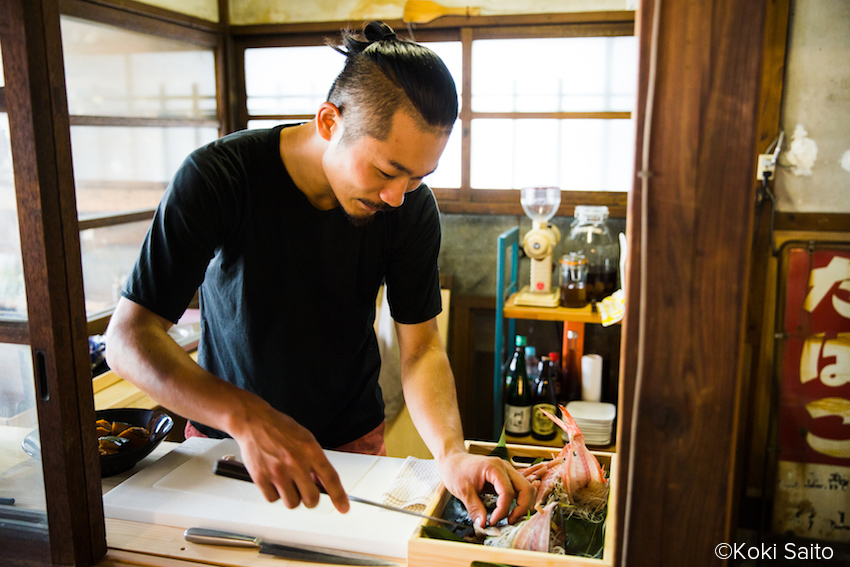
甲斐さんは今、利用されず破棄される魚のマーケット拡大のために、横浜中央卸売市場ともコラボレーションをしている。東京の豊洲魚市場ほど大きくはないが、日本のトップ5の一つに名を掲げる魚市場であり、ここでのイベントは大きな反響を呼ぶだろう。彼は、自らのことを“漁師と消費者の間に立つ仲介者であり通訳” だという。甲斐さんが海からのすべての食資源活用について、声を広く届けてゆく使命を抱えていることは明らかだ。↙︎
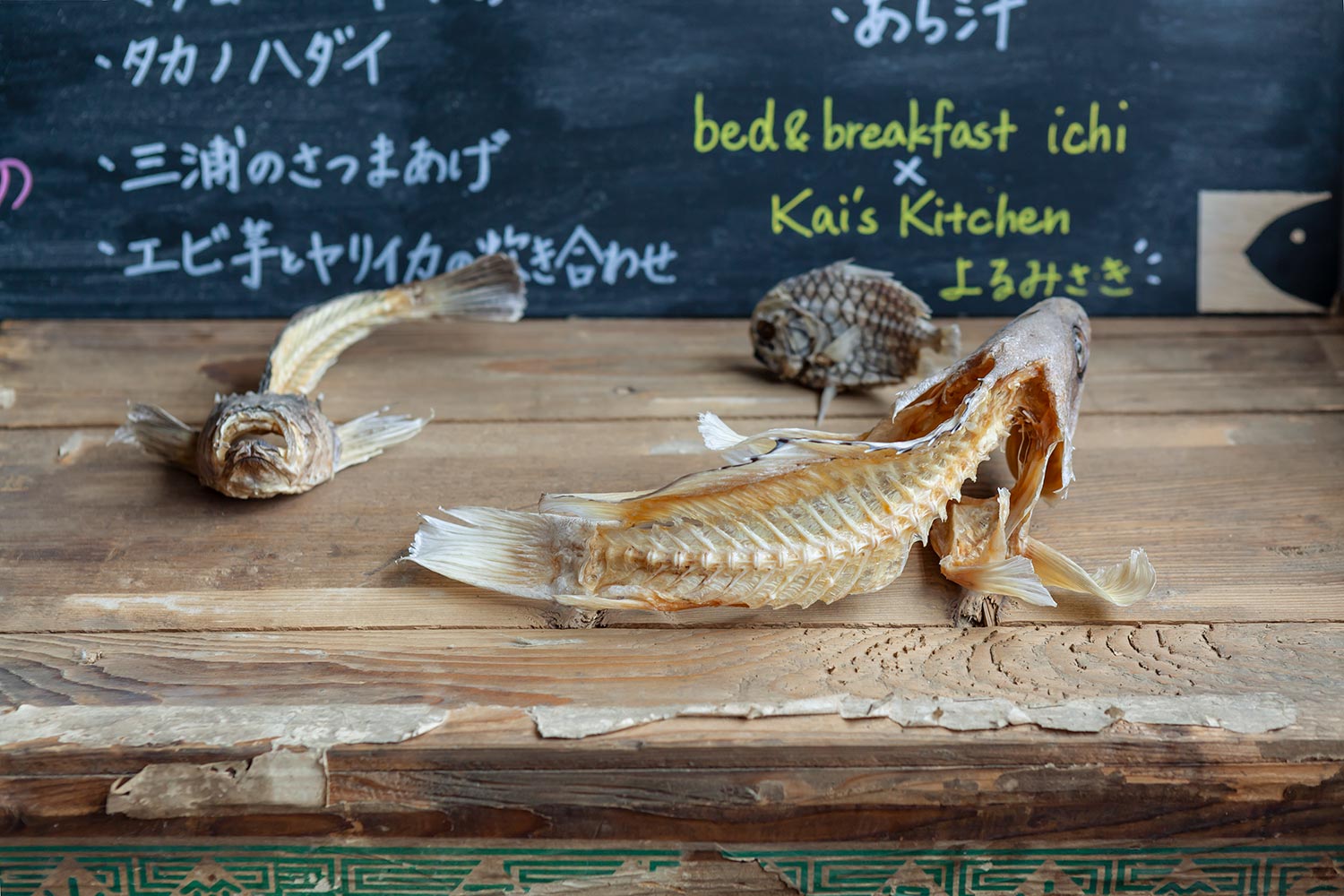
互いに似たような活動をするふたりとの素晴らしい出会い。彼らはまだまだ小さなスケールで活動をしているが、その熱意と好奇心は、接した人々に大きなインパクトを確実に与えている。また、彼らのように人生を変えようとする強い思いと希望を持って湘南にやってくる人々との出会いもまた心を震わす。
どんな「もったいない」話においても、「廃棄物」というものが未だ私たちの生活の中で大きな比重を占めている。湘南のビーチを歩けば誰もがそれに気づくはずだ。最近大きな注目を集めてはいるのがマイクロプラスチックだが、食用資源を大量に捨てている僕らの社会のあり方も、環境に多大な影響を与えているのだ。
僕ら、湘南の住人たちは、海とその恵みを享受するロケーション、穏やかな気候と肥えた土壌の恩恵を得ている。だからこそ僕らはこの地が生み出す食材にもっと着目し、それらを最大限に活かせる領域を見つけるべきだ。
より豊富な種類の地魚を食し、規格外野菜を利用することは、すべての人のために良いことだ。漁師や農家にとってはより多くの商品を販売できる機会に繋がり、最終的に収益性は高くなる。また、生態系の変化に順応した活動をすることにもなる。漁師たちは種類を気にせずその地域の旬のものを収穫することができ、農家には地域の気候に合った農業を展開させることができる。魚の品種を拡大することはまた、より人気のある品種の在庫枯渇問題を回復させる機会にもつながるのだ。
ここに「湘南コード」の3つ目を掲げよう:
どんな「もったいない」話においても、「廃棄物」というものが未だ私たちの生活の中で大きな比重を占めている。湘南のビーチを歩けば誰もがそれに気づくはずだ。最近大きな注目を集めてはいるのがマイクロプラスチックだが、食用資源を大量に捨てている僕らの社会のあり方も、環境に多大な影響を与えているのだ。
僕ら、湘南の住人たちは、海とその恵みを享受するロケーション、穏やかな気候と肥えた土壌の恩恵を得ている。だからこそ僕らはこの地が生み出す食材にもっと着目し、それらを最大限に活かせる領域を見つけるべきだ。
より豊富な種類の地魚を食し、規格外野菜を利用することは、すべての人のために良いことだ。漁師や農家にとってはより多くの商品を販売できる機会に繋がり、最終的に収益性は高くなる。また、生態系の変化に順応した活動をすることにもなる。漁師たちは種類を気にせずその地域の旬のものを収穫することができ、農家には地域の気候に合った農業を展開させることができる。魚の品種を拡大することはまた、より人気のある品種の在庫枯渇問題を回復させる機会にもつながるのだ。
ここに「湘南コード」の3つ目を掲げよう:
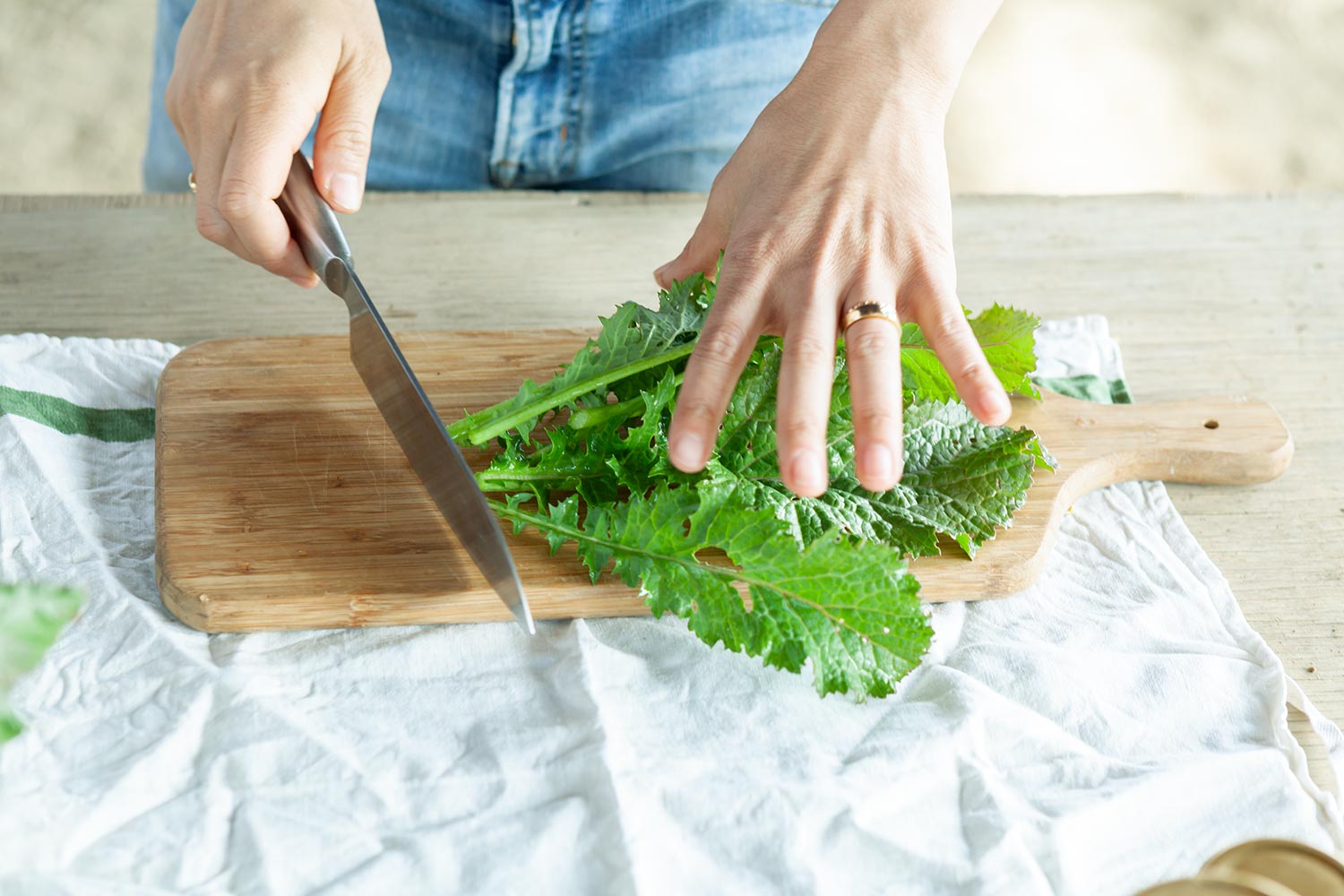
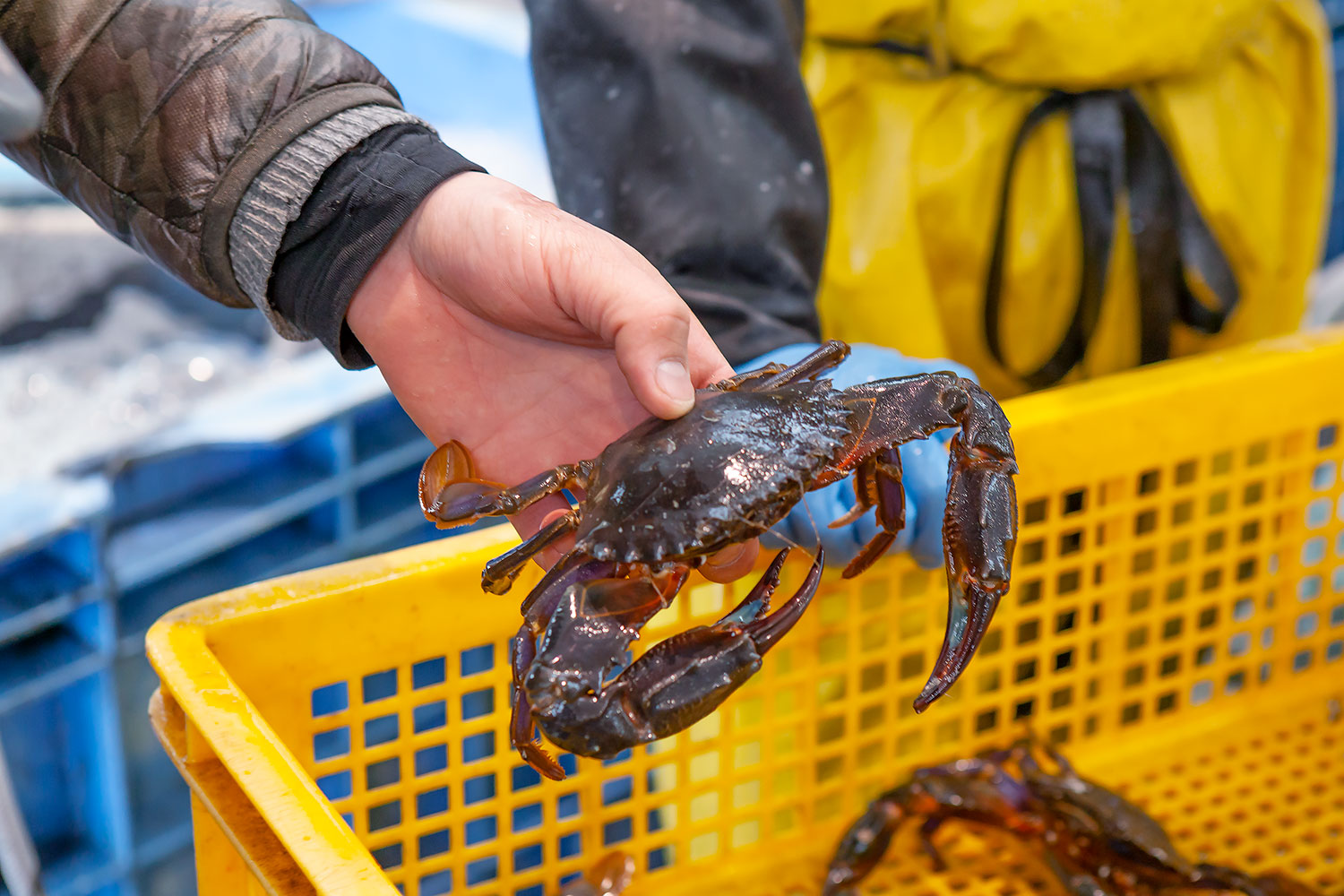
SHONAN CODE no.3
“食品廃棄物を最小限にする方法を見つけ、海と大地からの恵を大切にする”
僕らがまずスタートできることは?
✔︎ コミュニティガーデンをつくる
✔︎ 地域支援型農業に参加する
✔︎ 漁港直売店や漁業関係者から地元の魚を直接購入をする
✔︎ ファーマーズマーケットや露店商などの直売店で地元野菜を購入する
✔︎ 地元の魚屋や漁師などから旬の魚やその調理の仕方を教えてもらう
✔︎ 食品廃棄物を出さない野菜や魚の調理法、利用法を習う
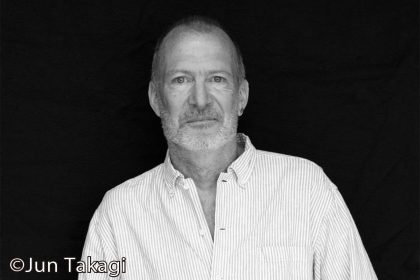
PROFILE
グレゴリー・スター / Gregory Starr
アメリカ人ジャーナリスト、編集者、映画評論家。横須賀市秋谷在住。日本在住35年。『プレミア日本版』や『講談社インターナショナル』の編集長を経て、独立。FCCJ(日本外国特派員協会)が出版する『Number1 Shimbun』の編集やTOKYO FM『スカパー! 日曜シネマパーク』のナビゲーターなどで活躍後、出版社「Sora Books」を創立。『ほぼ日』や『Modern Living』など数多くの翻訳エディターとしても活躍。
The beautiful world of “ugly” food
ON A BITTER, SNOW-FLURRYING FEBRUARY MORNING, Kai Kosei carries a Styrofoam cooler box to the Katase port fisheries direct sales building. He steps inside and peers into the various tubs and containers where the fishermen have laid out their fresh catch. He’s not completely satisfied with the usual lineup and pokes around until someone pulls out a container and offers the contents free of charge. Inside are five or six dark green-shelled rock crabs that are part of the bycatch. They’re small, not very attractive, and are known for being a bother to cook. No one else looks interested, but Kai seems happy to find something that no one else wants. He adds them to his selection and is already thinking of how he’s going to cook and serve them later, as a Miso Soup.
On a sunny February afternoon a few days later and some 20 kilometers down the coast, Chie Nishimura is cutting leaves from an organic mustard plant growing in a small organic farm plot in a secluded valley near Shonan Kokusai Mura. Their color is rich, their taste is pungent, but because the rows of plants are haphazard and the plants and leaves are all different sizes and quality, they would be categorized as “imperfect food” or b-kyu yasai. She fills a basket with handfuls of the leaves along with assorted other vegetables, all organic, all raised and harvested with personal attention. dIn a short time, these will soon be processed and packed into small glass jars and sold under the brand name of her company, FARM CANNING.
BOTH NISHIMURA AND KAI are part of a growing global movement toward using food that is perfectly edible but often treated as waste. Every year, an estimated 2.9 trillion pounds of food, about a third of all that the world produces, never gets consumed. While a huge portion of it is wasted after it has made its way to markets, restaurants and homes, another large proportion never makes its way beyond the harvest—both farm and sea. At the former fish market at Tokyo’s TSUKIJI, for example, 20,000 tons of totally edible fish were disposed of in 2012.
Groups around the world are fighting back. Sustainably minded kitchen professionals in Europe have hosted “Trash Fish” dinner events to introduce a wider variety of catch to menus. Community supported Agriculture systems, in which people pay for regular access to harvested vegetables, are flourishing in a number of countries, including Japan. And one of the hottest trending start-ups in the US is a company offering delivery of b-kyu vegetables at reduced prices to peoples’ homes.
If you feel an aversion to the term b-kyu vegetables, or would pass up an organically grown but weirdly shaped carrot in favor of a supermarket plastic wrapped and perfectly formed one, Nishimura Chie would like to set you straight.
On a sunny February afternoon a few days later and some 20 kilometers down the coast, Chie Nishimura is cutting leaves from an organic mustard plant growing in a small organic farm plot in a secluded valley near Shonan Kokusai Mura. Their color is rich, their taste is pungent, but because the rows of plants are haphazard and the plants and leaves are all different sizes and quality, they would be categorized as “imperfect food” or b-kyu yasai. She fills a basket with handfuls of the leaves along with assorted other vegetables, all organic, all raised and harvested with personal attention. dIn a short time, these will soon be processed and packed into small glass jars and sold under the brand name of her company, FARM CANNING.
BOTH NISHIMURA AND KAI are part of a growing global movement toward using food that is perfectly edible but often treated as waste. Every year, an estimated 2.9 trillion pounds of food, about a third of all that the world produces, never gets consumed. While a huge portion of it is wasted after it has made its way to markets, restaurants and homes, another large proportion never makes its way beyond the harvest—both farm and sea. At the former fish market at Tokyo’s TSUKIJI, for example, 20,000 tons of totally edible fish were disposed of in 2012.
Groups around the world are fighting back. Sustainably minded kitchen professionals in Europe have hosted “Trash Fish” dinner events to introduce a wider variety of catch to menus. Community supported Agriculture systems, in which people pay for regular access to harvested vegetables, are flourishing in a number of countries, including Japan. And one of the hottest trending start-ups in the US is a company offering delivery of b-kyu vegetables at reduced prices to peoples’ homes.
If you feel an aversion to the term b-kyu vegetables, or would pass up an organically grown but weirdly shaped carrot in favor of a supermarket plastic wrapped and perfectly formed one, Nishimura Chie would like to set you straight.
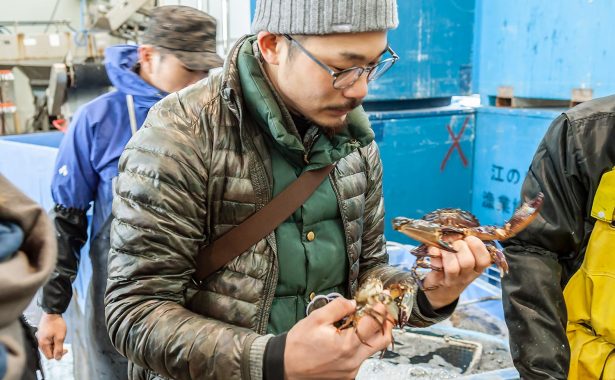
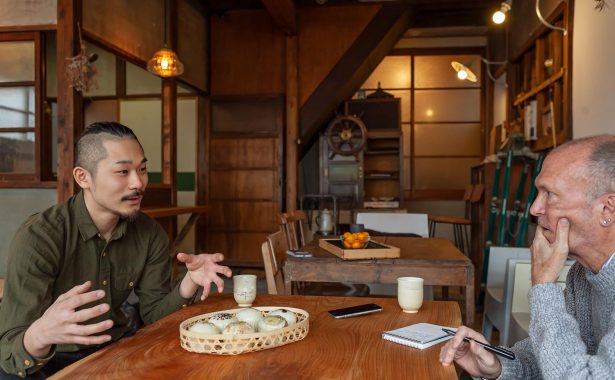
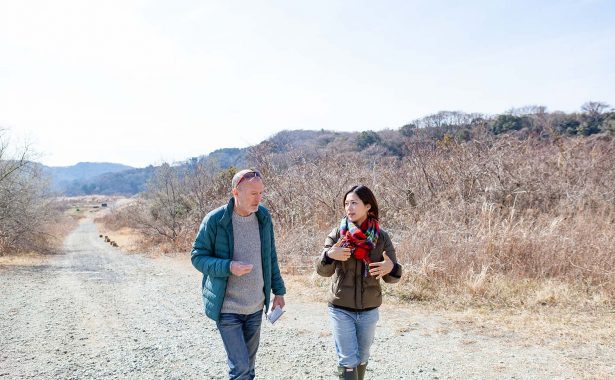
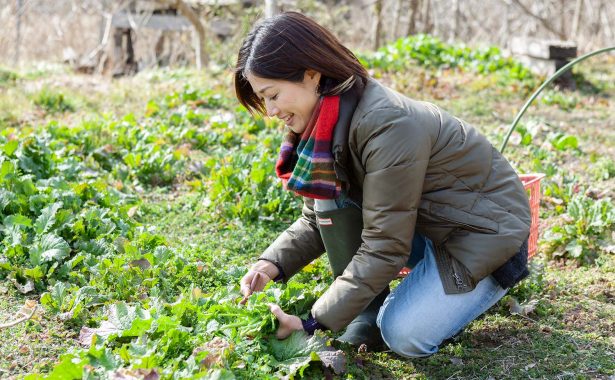
NISHIMURA FOUND HERSELF BEING RUN RAGGED, operating an organic café in Tokyo while beginning a family. Looking for a place where she could develop her dream of having a healthy life in a natural habitat, she moved to the Shonan area with her husband and two small boys. She was disappointed that she still had problems getting her hands on organic food, until she was introduced to Ito Chikara, who was in the process of creating a working farm out of an overgrown valley next to Shonan Village.
She plunged into helping out, the reward being all the vegetables the family could eat from the regular harvest. When challenged to find a way to attract more volunteers, she came up with the idea for the “Forest and Farm School,” a one-year program that has attracted attendees from as far as Chiba and Saitama. “I used my own dream as a model,” she says. “I thought a lot of people must feel like me: wanting to live relaxed, more organically, harvesting your own food and enjoying natural surroundings with your children.” The course is easy-going, with once a month sessions that include field work and lessons in canning. It also includes a monthly delivery of vegetables for participants to can at home. (A new class year will begin in May.)
Nishimura’s FARM CANNING has also expanded into retail sales. Besides what is produced on the farm, she has convinced a number of other farmers to sell their b-kyu produce which she then cans for sale at a number of outlets, including supermarkets, café delis and an online store. “Some farmers are embarrassed to admit they have b-kyu vegetables, so we have to convince them it’s okay,” she says. FARM CANNING now produces some 300 to 400 bottles a month, staying away from typical things like jam and pickles and focusing on useful items that busy people can add to spice up meals at home.
But she says there’s nothing equal to eating something you’ve harvested and canned yourself. “As you open the lid, you might even remember the fact that it was raining when you picked the ingredients,” she says. “So it’s like canning memories.”
She plunged into helping out, the reward being all the vegetables the family could eat from the regular harvest. When challenged to find a way to attract more volunteers, she came up with the idea for the “Forest and Farm School,” a one-year program that has attracted attendees from as far as Chiba and Saitama. “I used my own dream as a model,” she says. “I thought a lot of people must feel like me: wanting to live relaxed, more organically, harvesting your own food and enjoying natural surroundings with your children.” The course is easy-going, with once a month sessions that include field work and lessons in canning. It also includes a monthly delivery of vegetables for participants to can at home. (A new class year will begin in May.)
Nishimura’s FARM CANNING has also expanded into retail sales. Besides what is produced on the farm, she has convinced a number of other farmers to sell their b-kyu produce which she then cans for sale at a number of outlets, including supermarkets, café delis and an online store. “Some farmers are embarrassed to admit they have b-kyu vegetables, so we have to convince them it’s okay,” she says. FARM CANNING now produces some 300 to 400 bottles a month, staying away from typical things like jam and pickles and focusing on useful items that busy people can add to spice up meals at home.
But she says there’s nothing equal to eating something you’ve harvested and canned yourself. “As you open the lid, you might even remember the fact that it was raining when you picked the ingredients,” she says. “So it’s like canning memories.”
KAI, WHO HAILS FROM KUMAMOTO, HAS AN UNUSUAL APPROACH WITH FISH. Ever since his two years in a Tokyo restaurant, where one fish dealer would bring unusual types of fish from all over Japan, he’s been fascinated with the kinds of fish that don’t usually make it onto restaurant menus and how to cook them. Now he’s become an apostle for Unusable fish. These are often referred to by unflattering names, like “trash fish” or “ugly fish” and unused for a number of reasons. Maybe they’re too small or too big to fit in the standard containers with others of the same kind. Maybe they’re only tasty at certain times of year. Maybe they’re just unknown by the general public.
After leaving Tokyo for Ninomiya, Kai began hanging out at fish markets, keeping his ears open. “I started to get known as someone looking for odd and unusual fish, and I’d get asked how I cooked them,” he says. “Then they’d tell me about other unpopular fish that were also good, depending on how they were used.” Kai and his wife, Yuka, live in a former peanut wholesaler’s quarters, which they are in the process of reforming into a minpaku and small restaurant/café. He roams up and down the Shonan coast and all the way to Misaki, giving cooking workshops with a focus on how to prepare local unwanted fish.
“I cooked bora at a recent event in Misaki,” he says. “It has a bad image, but I served it as simple sashimi, and everyone thought it was delicious.” He has other suggestions: Kamasu “I was surprised at its fattiness.” Utsubo: “A lot of collagen, and it’s good as tataki or fried,” ei livers: “Just like fois gras.” He’s also working with the Yokohama Fish Market, in discussions on how to widen the market for unused fish. While not as huge as the Tokyo Fish Market at Toyosu, it’s one of Japan’s top five, and an event held there can have an impact. He calls himself an interpreter, an intermediary between fishermen and the public, and it’s clear that Kai is on a mission to spread the word about using all the resources of the sea.
After leaving Tokyo for Ninomiya, Kai began hanging out at fish markets, keeping his ears open. “I started to get known as someone looking for odd and unusual fish, and I’d get asked how I cooked them,” he says. “Then they’d tell me about other unpopular fish that were also good, depending on how they were used.” Kai and his wife, Yuka, live in a former peanut wholesaler’s quarters, which they are in the process of reforming into a minpaku and small restaurant/café. He roams up and down the Shonan coast and all the way to Misaki, giving cooking workshops with a focus on how to prepare local unwanted fish.
“I cooked bora at a recent event in Misaki,” he says. “It has a bad image, but I served it as simple sashimi, and everyone thought it was delicious.” He has other suggestions: Kamasu “I was surprised at its fattiness.” Utsubo: “A lot of collagen, and it’s good as tataki or fried,” ei livers: “Just like fois gras.” He’s also working with the Yokohama Fish Market, in discussions on how to widen the market for unused fish. While not as huge as the Tokyo Fish Market at Toyosu, it’s one of Japan’s top five, and an event held there can have an impact. He calls himself an interpreter, an intermediary between fishermen and the public, and it’s clear that Kai is on a mission to spread the word about using all the resources of the sea.
IT WAS GREAT TO FIND TWO PEOPLE who are doing such similar things, and while they are now operating on a small scale, their enthusiasm and curiosity surely mark them as people that are having an impact on those they come in contact with. It’s also fascinating to find people who have come to Shonan with their aspirations and hopes to change lives.
For all the talk of "Mottainai", waste is still a huge part of our lives, as anyone who has walked the beaches of Shonan can attest. And while plastic waste has rightfully garnered huge attention recently, the way our society throws away perfectly edible resources also has a tremendous impact on the environment.
We Shonan residents are blessed by our location by the sea and its bounty, by the moderate climate and the many fields where growing is easy. So we should be especially careful with our resources, and look for areas we can lead in making the best use of them.
Having a broader range of fish to harvest and using imperfect, b-kyu vegetables is good for everyone. It’s more profitable in the end for fishermen and farmers, meaning they can sell more of their harvest. It allows them to respond to changes in the ecosystems—letting fishermen harvest whatever is abundant in their area at the time and farmers to evolve with climate changes. Expanding the varieties of fish diffuses demand, and gives depleted stocks of more popular varieties a chance to recover.
So here’s the third instalment of the Shonan Code:
SHONAN CODE no.3
“Find ways to minimise food waste that will support the maintenance of our natural resources from the sea and soil”.
And here’s some ways to start:
✔︎ Start a community garden
✔︎ Join a community supported agriculture program
✔︎ Buy directly from fisheries
✔︎ Buy directly from agricultural outlets, like farmers markets or road-side stands
✔︎ Talk to the fish mongers and fishermen about what’s fresh and how to cook certain fish
✔︎ Learn to prepare vegetables and fish in ways that produce little waste
For all the talk of "Mottainai", waste is still a huge part of our lives, as anyone who has walked the beaches of Shonan can attest. And while plastic waste has rightfully garnered huge attention recently, the way our society throws away perfectly edible resources also has a tremendous impact on the environment.
We Shonan residents are blessed by our location by the sea and its bounty, by the moderate climate and the many fields where growing is easy. So we should be especially careful with our resources, and look for areas we can lead in making the best use of them.
Having a broader range of fish to harvest and using imperfect, b-kyu vegetables is good for everyone. It’s more profitable in the end for fishermen and farmers, meaning they can sell more of their harvest. It allows them to respond to changes in the ecosystems—letting fishermen harvest whatever is abundant in their area at the time and farmers to evolve with climate changes. Expanding the varieties of fish diffuses demand, and gives depleted stocks of more popular varieties a chance to recover.
So here’s the third instalment of the Shonan Code:
SHONAN CODE no.3
“Find ways to minimise food waste that will support the maintenance of our natural resources from the sea and soil”.
And here’s some ways to start:
✔︎ Start a community garden
✔︎ Join a community supported agriculture program
✔︎ Buy directly from fisheries
✔︎ Buy directly from agricultural outlets, like farmers markets or road-side stands
✔︎ Talk to the fish mongers and fishermen about what’s fresh and how to cook certain fish
✔︎ Learn to prepare vegetables and fish in ways that produce little waste
